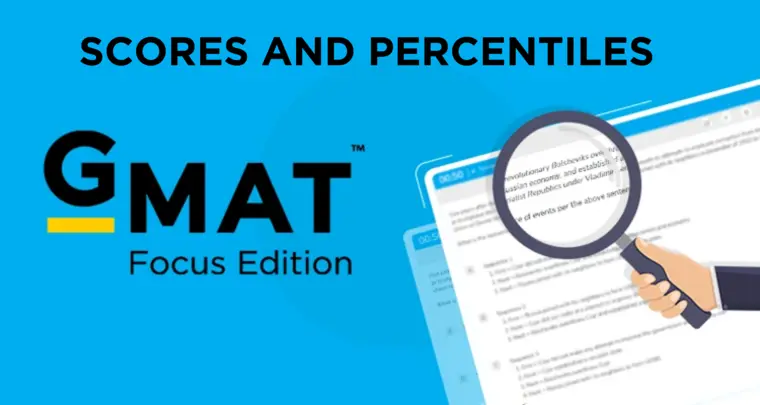A product that represents a clear technological advance over competing products can generally command a high price. Because technological advances tend to be quickly surpassed and companies want to make large profits while they still can, many companies charge the maximum possible price for such a product. But large profits on the new product will give competitors a strong incentive to quickly match the new product’s capabilities. Consequently, the strategy to maximize overall profit from a new product is to charge less than the greatest possible price.
In the argument above, the two portions in boldface play which of the following roles?
A. The first is a consideration raised to argue that a certain strategy is counterproductive; the second presents that strategy.
B. The first is a consideration raised to support the strategy that the argument recommends; the second presents that strategy.
C. The first is a consideration raised to help explain the popularity of a certain strategy; the second presents that strategy.
D. The first is an assumption, rejected by the argument, that has been used to justify a course of action; the second presents that course of action.
E. The first is a consideration that has been used to justify adopting a certain strategy; the second presents the intended outcome of that strategy.
Solution
Understanding the Passage
| Text from Passage | Analysis |
| “A product that represents a clear technological advance over competing products can generally command a high price.” | What it says: When a company creates a product that’s significantly better than what competitors offer, they can typically charge customers a lot of money for it Visualization: Company A launches smartphone with 5-day battery life vs competitors’ 1-day battery → Company A can charge $1200 while competitors charge $800 What it does: Sets up the basic business principle that technological superiority allows premium pricing Source: Author’s view |
| (Boldface 1) “technological advances tend to be quickly surpassed” | What it says: When one company creates a breakthrough technology, other companies usually figure out how to match or beat it pretty fast Visualization: 2024: Company A has 5-day battery → 2025: Company B launches 6-day battery → 2026: Company C launches 7-day battery What it does: Provides a reason why the high-price advantage doesn’t last long Source: Author’s view |
| “and companies want to make large profits while they still can” | What it says: Since companies know their technological advantage will disappear soon, they want to earn as much money as possible during the short window when they’re ahead Visualization: Company A knows their 5-day battery advantage will last only 12 months, so they want to maximize profits during those 12 months What it does: Explains the motivation behind aggressive pricing strategies Source: Author’s view |
| (Boldface 2) “many companies charge the maximum possible price for such a product” | What it says: Because of this urgency to profit quickly, lots of companies set their prices as high as the market will bear for their advanced products Visualization: Company A could charge anywhere from $900-$1500 for their superior phone → They choose $1500 (the maximum customers will pay) What it does: Describes the common business strategy that results from the reasoning above Source: Author’s view |
| “But large profits on the new product will give competitors a strong incentive to quickly match the new product’s capabilities.” | What it says: However, when competitors see Company A making huge profits with their $1500 phone, this motivates competitors to work extra hard and fast to create similar technology Visualization: Company A earns $700 profit per phone at $1500 price → Competitors see this $700/unit profit → Competitors invest heavily in R&D to catch up faster What it does: Introduces a counterargument showing a negative consequence of maximum pricing Source: Author’s view |
| “Consequently, the strategy to maximize overall profit from a new product is to charge less than the greatest possible price.” | What it says: Therefore, if companies want to make the most total money from their innovation over time, they should charge less than the maximum they could get away with Visualization: Instead of charging $1500 maximum → Charge $1200 → Lower profits attract less competitor attention → Maintain advantage for 24 months instead of 12 months → Higher total profits What it does: States the main conclusion based on the reasoning provided Source: Author’s view |
Overall Structure
The author is presenting a business strategy argument that challenges conventional wisdom. The flow moves from: established principle → common practice based on that principle → problem with that practice → better alternative strategy.
Main Conclusion: The strategy to maximize overall profit from a new product is to charge less than the greatest possible price.
Boldface Segments
- Boldface 1: technological advances tend to be quickly surpassed
- Boldface 2: many companies charge the maximum possible price for such a product
Boldface Understanding
Boldface 1:
- Function: Provides a key reason explaining why companies feel pressure to price aggressively
- Direction: Supports the author’s conclusion (explains why maximum pricing is problematic)
Boldface 2:
- Function: Describes the common business practice that the author ultimately argues against
- Direction: Opposes the author’s conclusion (represents the flawed strategy the author wants to change)
Structural Classification
Boldface 1:
- Structural Role: Supporting evidence/reason that explains the motivation behind a problematic strategy
- Predicted Answer Patterns: “provides explanation for,” “gives reason why,” “supports the premise that”
Boldface 2:
- Structural Role: Description of current practice that the argument seeks to refute
- Predicted Answer Patterns: “describes a strategy that the argument opposes,” “states a practice that the argument argues against”
Answer Choices Explained
A. The first is a consideration raised to argue that a certain strategy is counterproductive; the second presents that strategy.
‘The first is a consideration raised to argue that a certain strategy is counterproductive’ – ✗ WRONG – The first boldface doesn’t argue against maximum pricing; it actually explains why companies feel compelled to use that strategy. It provides reasoning for the behavior rather than criticizing it.
B. The first is a consideration raised to support the strategy that the argument recommends; the second presents that strategy.
‘The first is a consideration raised to support the strategy that the argument recommends’ – ✗ WRONG – The first boldface supports maximum pricing (which creates urgency), but the argument ultimately recommends charging LESS than maximum price. So this consideration supports the wrong strategy.
C. The first is a consideration raised to help explain the popularity of a certain strategy; the second presents that strategy.
‘The first is a consideration raised to help explain the popularity of a certain strategy’ – ✓ CORRECT – The first boldface explains why maximum pricing is popular: because tech advances get surpassed quickly, companies feel pressure to maximize profits while they can. ‘the second presents that strategy’ – ✓ CORRECT – The second boldface presents the maximum pricing strategy that the first boldface helped explain.
D. The first is an assumption, rejected by the argument, that has been used to justify a course of action; the second presents that course of action.
‘The first is an assumption, rejected by the argument, that has been used to justify a course of action’ – ✗ WRONG – The first boldface isn’t an assumption that the argument rejects. The author accepts that tech advances do get surpassed quickly – this is presented as factual reality, not a rejected assumption.
E. The first is a consideration that has been used to justify adopting a certain strategy; the second presents the intended outcome of that strategy.
‘The first is a consideration that has been used to justify adopting a certain strategy’ – ✓ CORRECT – The first boldface does justify maximum pricing by explaining the time pressure companies face. ‘the second presents the intended outcome of that strategy’ – ✗ WRONG – The second boldface presents the strategy itself (maximum pricing), not the intended outcome. The intended outcome would be ‘large profits while they still can.’














